Many people are fascinated by owls, which are distinctive birds. What is so special about the owl that makes it different than other birds?
The true facts about the owl will reveal unique characteristics that will help everyone to better understand these birds.
While they are fascinating birds of prey, they are also some of the most mysterious birds in the world as they are not known to be out in the open for everyone to see.
It is also apparent that the behavior of owls is different compared to other birds as well. Here are some owl facts to think about.
1. An owl’s flattened face funnels sound to their ears
Do owls have good hearing? Owls have flattened facial disks that funnel sound to their ears so that they can detect even the slightest noise. The sound that is funneled to their ears is magnified as much as 10 times to help owls hear the kinds of noises humans can’t hear.
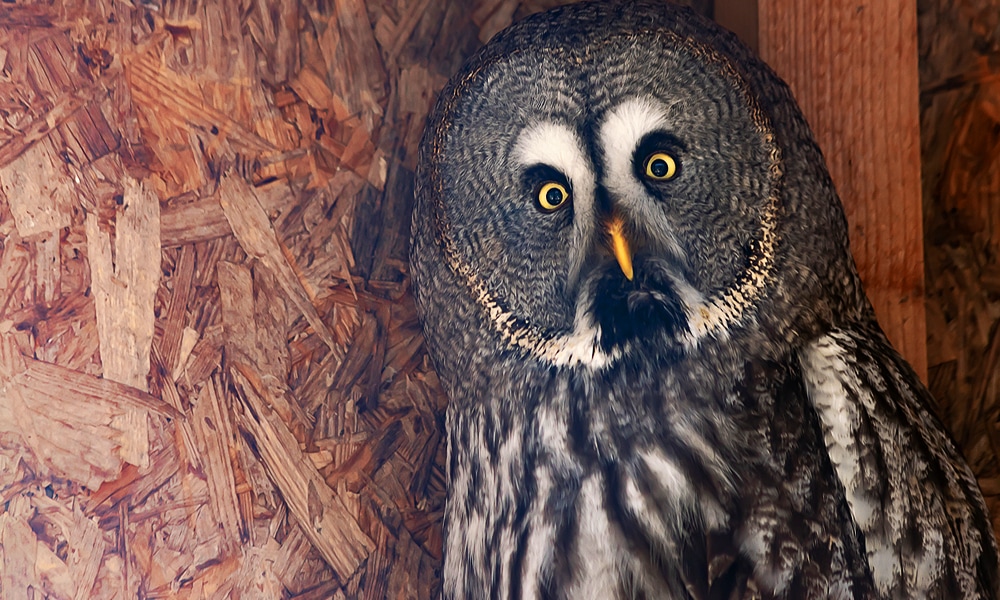
Owls are known to have extremely good hearing, and in the case of the Northern Hawk Owl, it is able to hear prey as much as 12 inches under the snow (1). The owl’s hearing is much more acute at certain frequencies enabling it to hear even subtle movement of their prey in leaves or undergrowth.
2. Not all owls are nocturnal
Are owls nocturnal? While famous for having nocturnal lifestyles, not all owls happen to be night owls. Not all owls are nocturnal, as some are either diurnal or crespecular, meaning that they are dawn and dusk hunters. Examples of diurnal owls include the northern hawk owl, the great gray owl (Strix nebulosa), and the northern pygmy owl (Glaucidum gnoma).
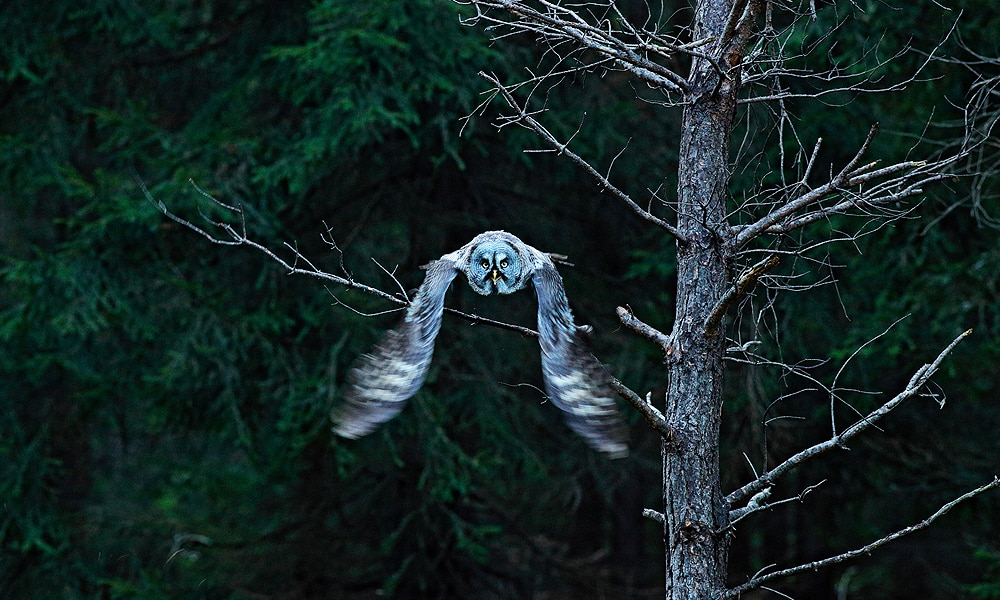
Marc Devokaitis, a public information specialist at the Cornell Lab of Ornithology in Ithaca, New York, says that these owls are daytime hunters because preferred prey, which are songbirds or small mammals, are also diurnal (2). Owls are also close relatives to hawks, which are also diurnal birds.
3. Owls poop through their mouth
Do owls poop? There are two ways for owls to poop. Half of their waste goes out of their back end, and the other half is coughed out of their mouth. How do owls poop? Regular owl poop is white uric acid and feces, which are excreted through the cloaca, which is also used for mating and laying eggs (3).
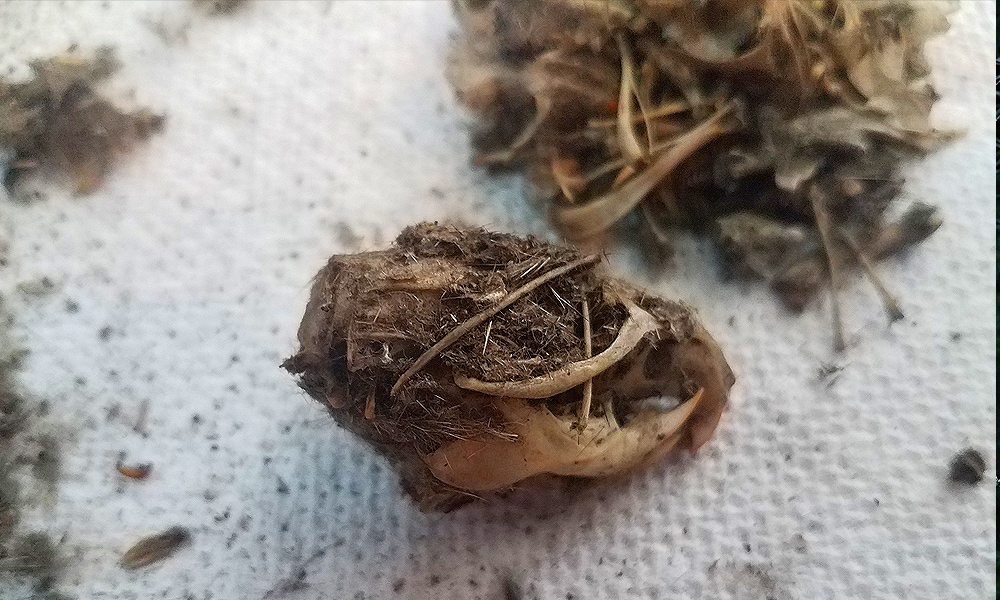
Round brown pellets are formed in the digestive process and are coughed up 6 to 10 hours after consuming a meal. Before producing a pellet, owls will take a pained expression, closing their eyes and narrowing their facial disk. After extending their neck forward, they vomit the pellet out.
4. Owls are highly intelligent
Are owls smart? Owls are invariably depicted as extremely intelligent in popular culture, but they are notoriously difficult to train. People would have a better time training birds like parrots, hawks, and even pigeons than owls. People hold owl intelligence in high regard because of their larger-than-usual eyes conveying the impression of intelligence.
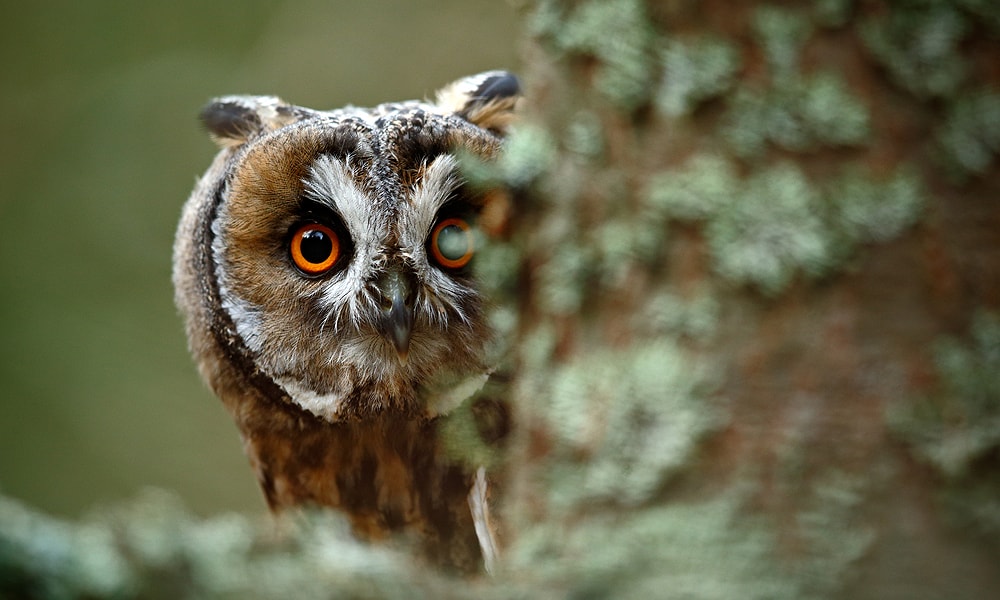
Owls are highly intelligent at night and excel when they hunt for food because of their great vision. Owls are good at what they do, but it is hard to get them to do much else. International raptor expert Jemima Parry-Jones says that owls are as thick as two short planks (4).
5. Owls can turn their heads 270 degrees
One fun fact about owls is that their eyes function differently than other birds. The eyes of an owl are supported by bony eye sockets, which means they cannot turn their eyes. Instead, owls rotate their heads up to 270 degrees. They can actually turn their necks 135 degrees in either direction, which gives them a total movement of 270 degrees.
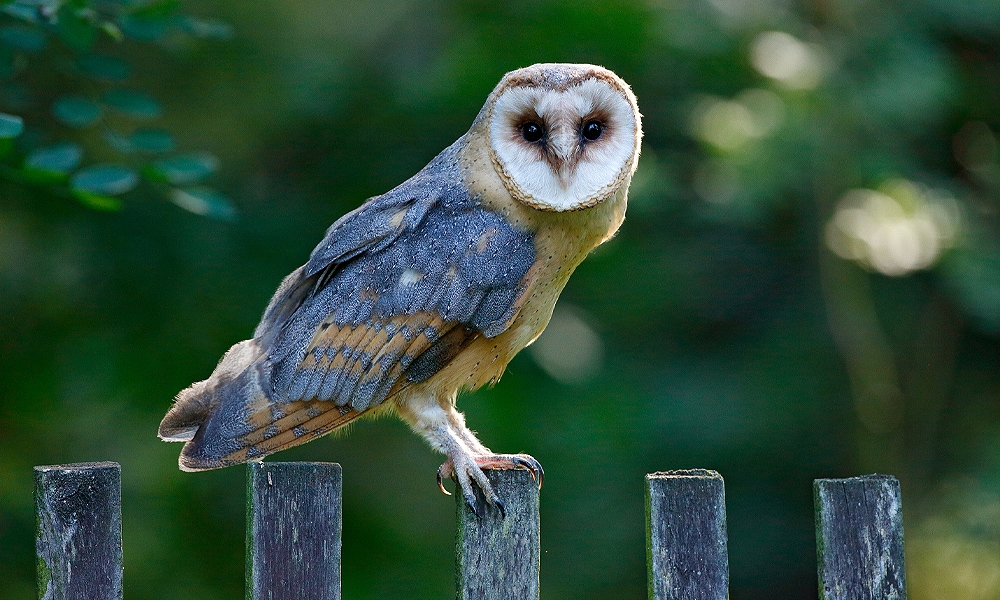
It is only a myth that owls can completely turn their heads around 360 degrees. Research at Johns Hopkins University revealed that the owls’ neck bones, or vertebrae, contain holes that are much larger than those found in other birds or humans (5).
6. Owl flight is silent
It is impossible to hear an owl flying. Owls have very few down feathers but have downy barbules on the parts of the contour feathers closest to the skin. Owl feathers have many special designs. They have comb-like leading edges that are referred to as flutings or fimbriae.
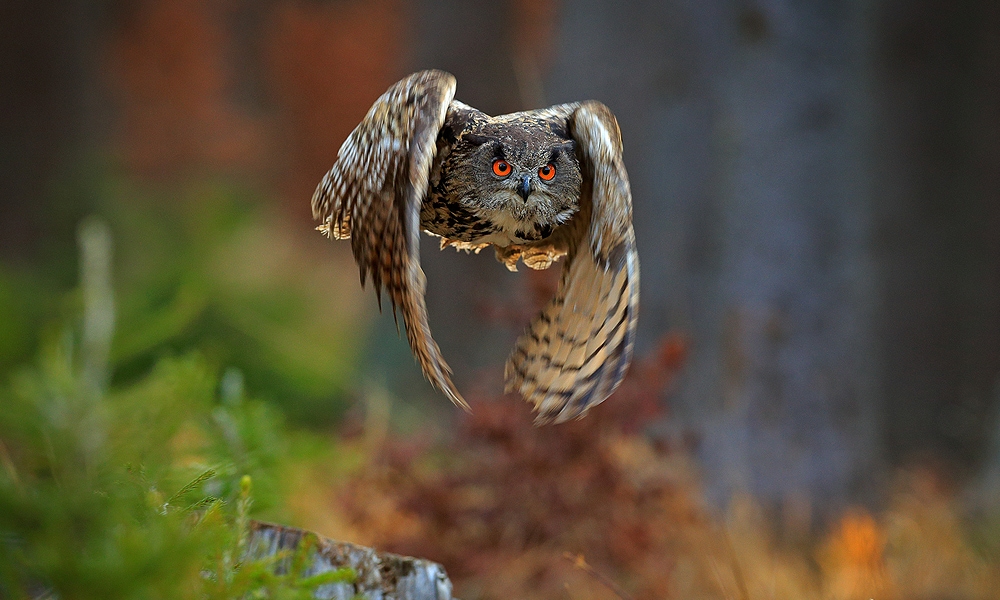
When other birds fly, air rushes over the surface of the wing, creating turbulence and a gushing noise. When owls fly, their feather edge breaks down the turbulence. How fast do owls fly? They are very fast creatures, gracefully gliding through the air as fast as 40 miles per hour in the case of the Great Horned Owl (6).
7. Owls sometimes eat other owls
Not only do owls eat surprisingly large prey, as the Eurasian Eagle Owl can grab small dear, but they can also eat other species of owl (7). Barred Owls will be attacked by Great Horned Owls, for example. Barred Owls will sometimes eat Western Screech Owls. However, not every species of owls are known to eat other owls.
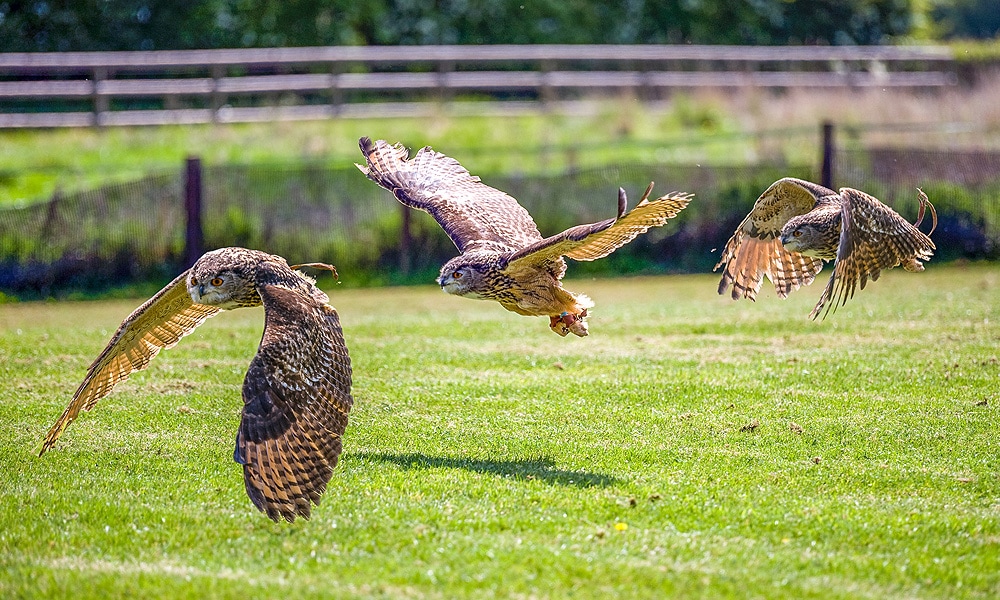
These birds are carnivorous and will eat rodents, small or medium-sized mammals, nocturnal insects, fish, and other birds. Different types of owls have different diets. For example, Asian and African Owls are highly trained in catching fish for their meal, whereas Screech Owls settle for small bugs.
8. Owls feed the strongest babies first
As harsh as it may sound, one of the main baby owl facts is that the oldest and strongest babies are fed by the parents before their siblings. If food happens to be scarce, then the youngest chicks will starve. In some cases, the weakest chicks are killed by their stronger siblings.
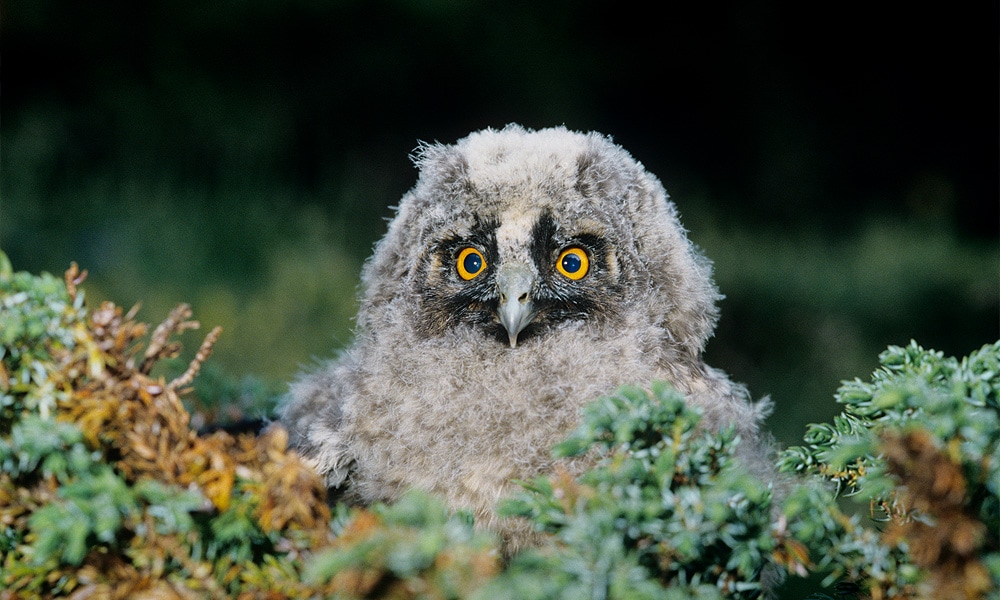
Though this is a seemingly brutal approach to the rearing of young, this ensures that, whatever the food availability, some offspring will always survive and produce further offspring. After an owlet leaves the nest, it will often live nearby in the same tree, and its parents will still bring it food.
9. Owls are farsighted
Owls are farsighted, which means that they can’t see things close to their eyes clearly. Up close, everything is blurry in the sight of owls, and they depend on small, hair-like feathers on their beaks and feet to feel their food.
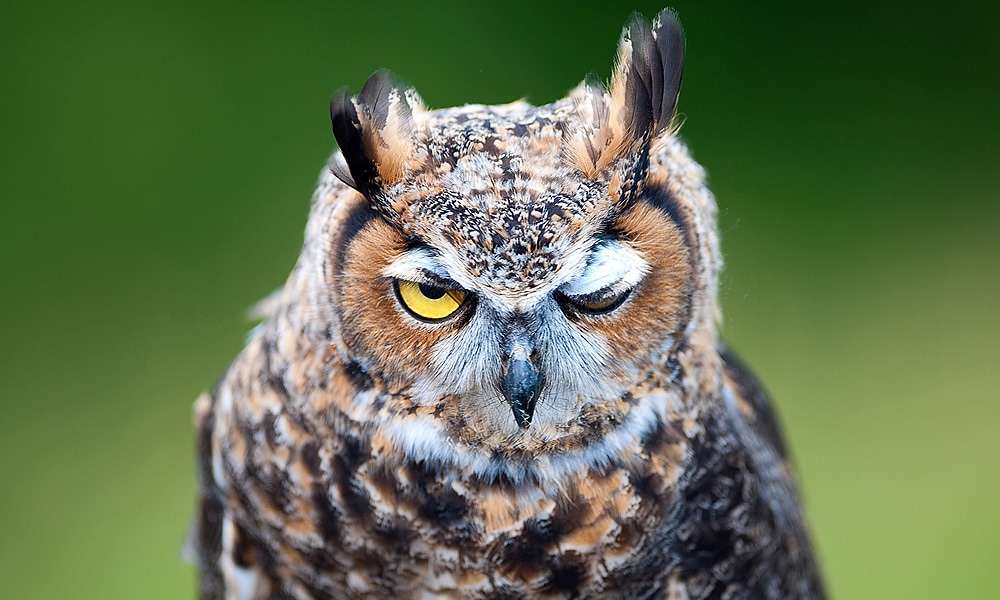
Can owls see in the dark? The advantages in owl vision reside in seeing objects that are far away, and this matters especially when they use their superior night vision to hunt their prey. Owls are able to spot their prey from miles away, sitting atop a tall tree, scanning the forest grounds below for unsuspecting mammals walking around.
10. Many owl species have asymmetrical ears
Do owls have ears? Many owl species have asymmetrical ears that are different sizes and different heights on their heads. Do owls have good hearing? With one ear being located higher in the skull than the other, this gives the owl a better chance to detect the location of prey due to a small difference in time when the sound reaches the ear.
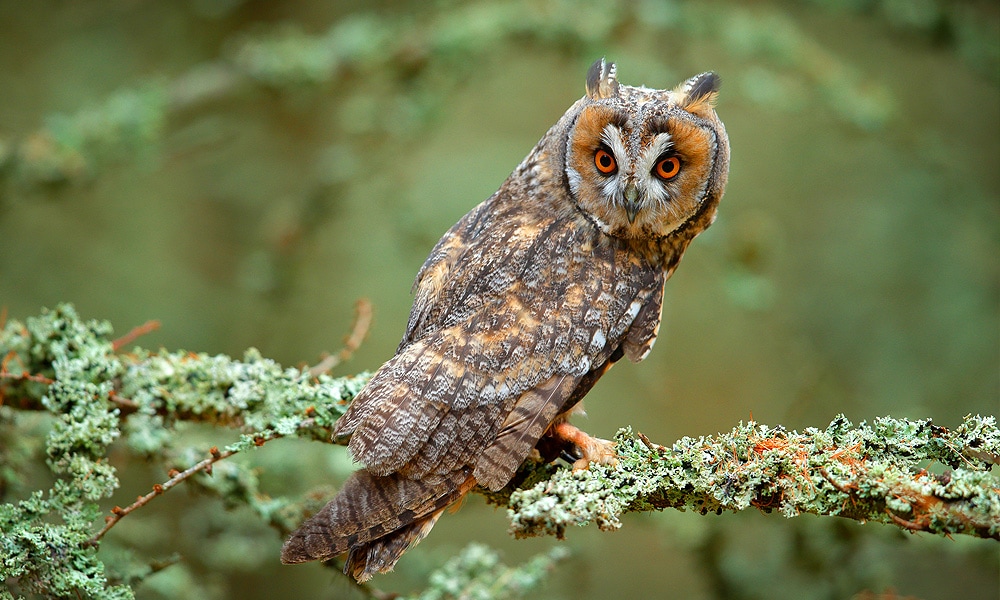
Because of this uneven alignment, owls are able to pinpoint the locations of sounds in multiple directions. Barn Owls have left ears that are higher than their right ears (8). The owl turns its head so that the sound it hears will arrive at both ears simultaneously.
11. Not all owls hoot
Not all owls hoot as they can make a wide range of other sounds, such as screeches, whistles, chirps, shrieks, barks, growls, rattles and hisses. All owls are normally associated with the famous “hoo hoo” sound, but only the Great Horned Owl makes that call.
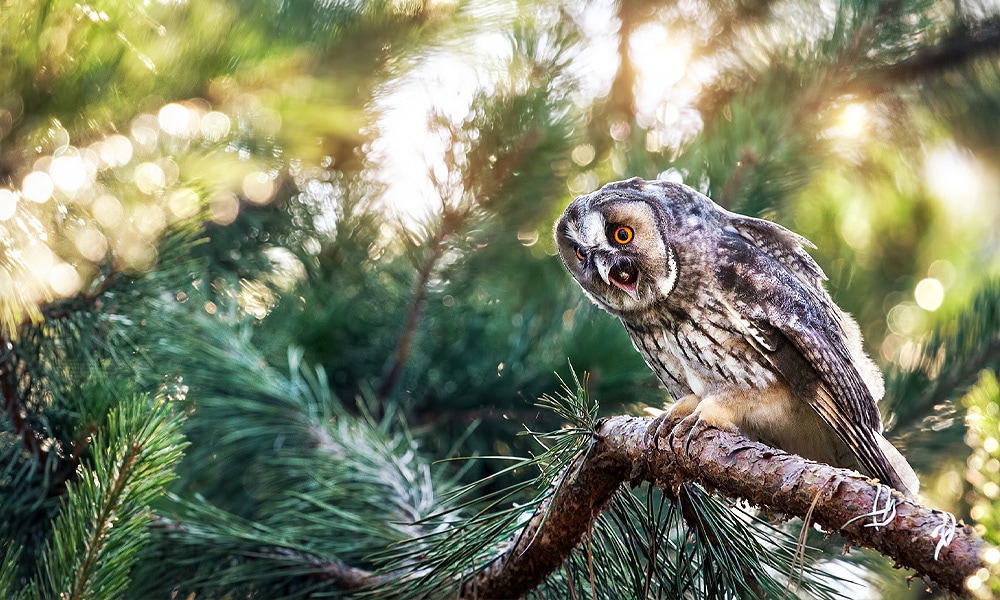
Barn Owls make hissing sounds, the Eastern Screech Owl (9) whinnies like a horse, and Northern Saw-whet Owls (10) stay true to their name, sounding like an old whetstone sharpening a saw. The easily recognizable hoot you are familiar with is usually a territorial call. Hoots declare a claim to a particular territory, serving as a warning to other owls to stay away.
12. Owls have zygodactyl feet
Owls have zygodactyl feet with two toes pointing forward and two toes pointing backward. However, unlike most other zygodactyl birds, owls can pivot one of their back toes forward to help them grip and walk. All of their toes have sharp talons. This stronger, more powerful grip enables owls to be more effective predators.
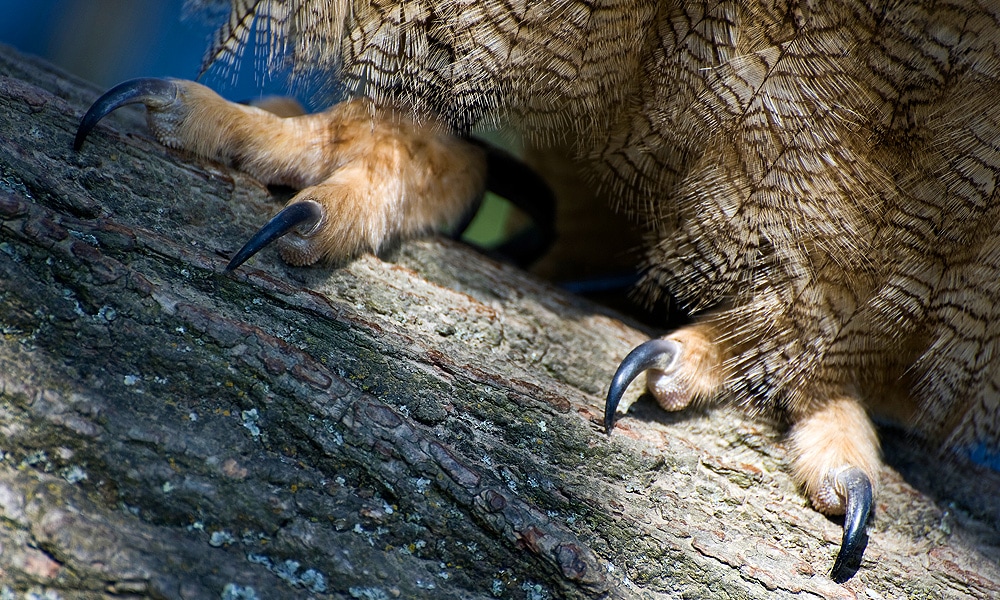
Owls use their powerful talons to capture their prey. The body structures in an owl’s legs are shorter and stronger than the equivalent bones in other birds. Their feet are able to withstand the force of an impact with prey. Many owl species have feathered feet to protect them from cold weather.
13. Owls don’t have eyeballs, they have eye “tubes”
Not all species of birds have round eyeballs. According to the National Geographic Society, the owl eyeball is shaped like a long tube. These eye tubes can’t move around the same way as those of humans and many other animals.
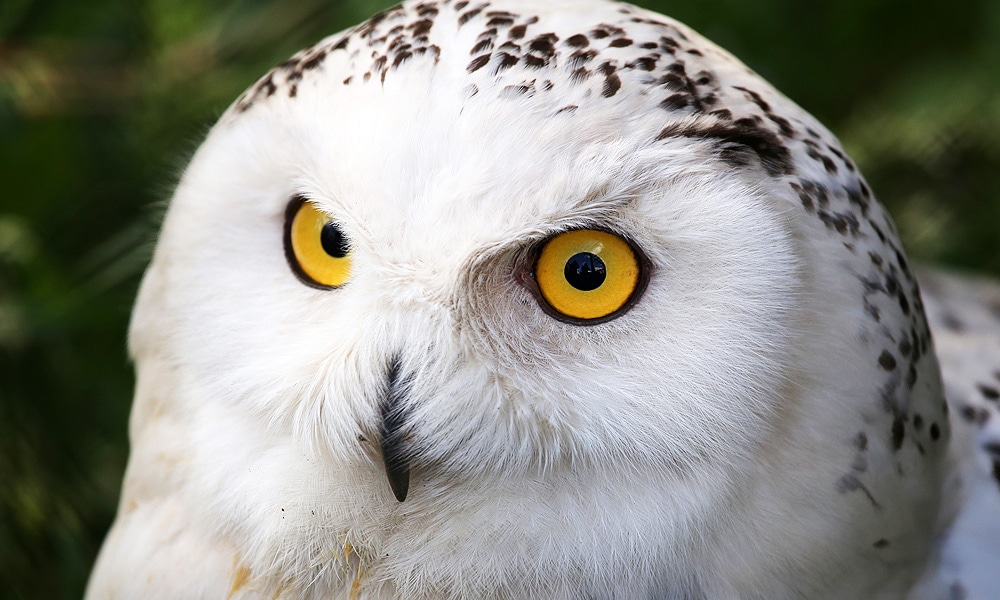
These eye tubes are held fast in place by bones that are called sclerotic rings. An owl’s eyes make up 3% of its entire body weight, whereas in comparison, eyes account for only 0.0003% of a human’s body weight. Having an advantage in binocular-like vision, an owl’s field of view is about 110°, and about 64% of that is binocular.
14. Owls aren’t great nest-builders
Where do owls sleep? Eagles, crows, and hawks are excellent nest-building birds. Owls aren’t nearly as excellent. Instead of building their own homes, some owls move into nesting boxes or empty nests that other birds leave behind or, according to the Owl Research Institute. Many owls take advantage of the hard work performed by other birds.

Many owls will nest in holes, which are called cavities or hollows, in trees. While it is assumed that male owls find and advertise a territory, it is actually the female owls that choose the nesting sites. The nest area is defended by the owl pair and will be their home for several months.
15. Female owls are larger than male owls
One surprising fact about owls is that for most species, female owls are larger, heavier, and more aggressive than males. The largest living species of owl is the Blakiston’s Fish Owl. Males are 20 to 24 inches in length and typically weigh 6.5 to 7.9 pounds.
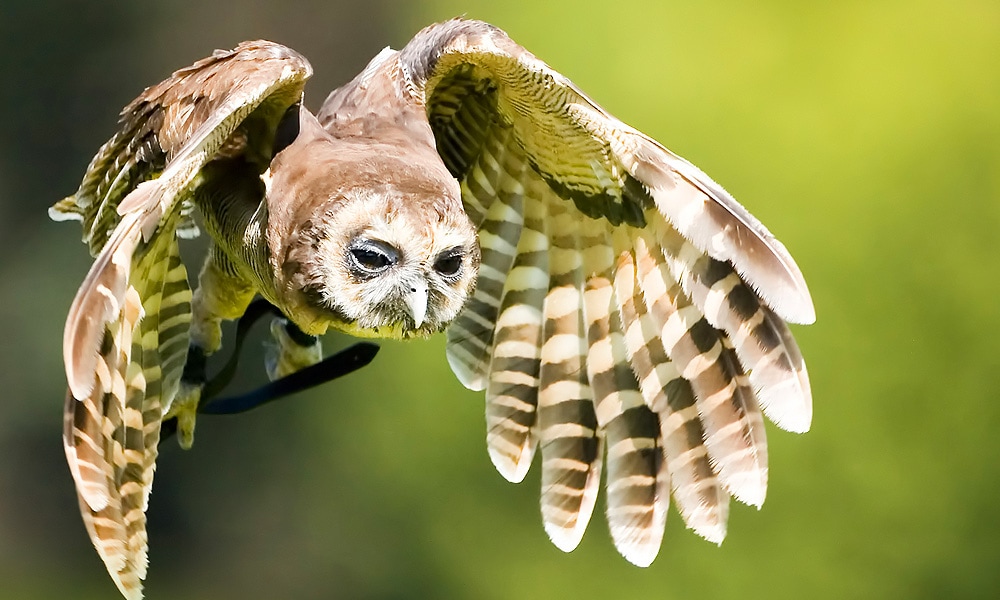
Females are generally 25% larger, measuring at 28 inches long and weighing in at 7.2 pounds. Barred Owls normally weigh 1 to 2.5 pounds. They are 16 to 20 inches long and have a wingspan of 39 to 44 inches. The female Barred Owl is up to 33% heavier than the male in body mass.
Also read: 12 Tips on how to get rid of owls safely
16. An owl’s eye color indicates when it prefers to hunt
The color of an owl’s eyes tells a story about their lives. The eye color of an owl helps birders identify their species and indicates the time of day they prefer to hunt. For example, owls with orange eyes are crepuscular, meaning they are active during twilight. The Eurasian Eagle Owl has orange eyes.
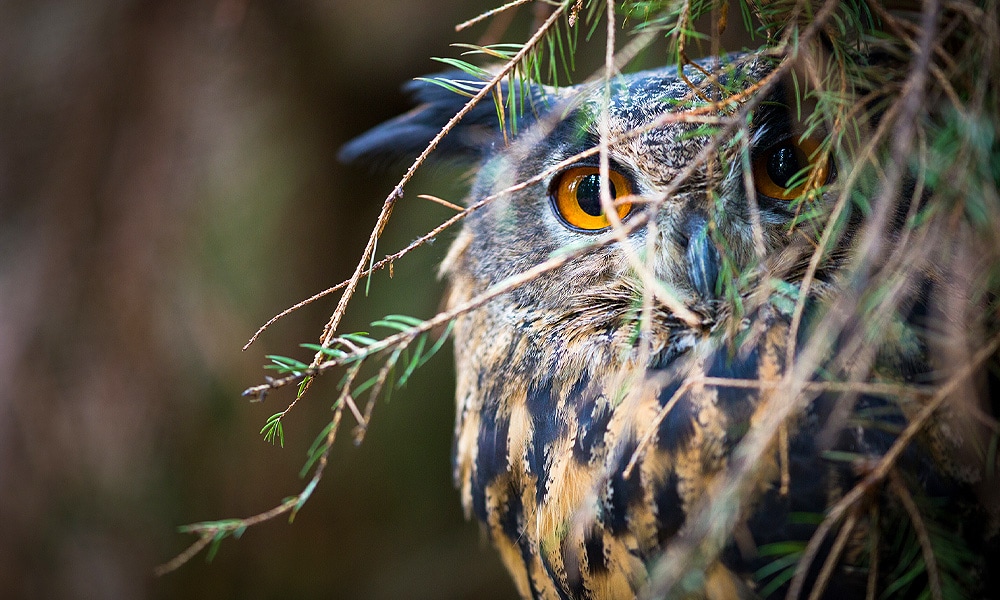
Owls that have dark brown or black eyes, such as the Barred Owl and the Northern Spotted Owl, are nocturnal and prefer to hunt at night. Owls with yellow eyes, such as the Burrowing Owl and the Snowy Owl, indicate that they are diurnal and prefer to hunt during the daytime.
17. An owl has three eyelids
The owl eye is more complex in design compared to other birds. An owl has three eyelids. One eyelid is used for blinking, one is used for sleeping, and one is used for keeping the eye clean and healthy. The third eyelid is also called the nictitating membrane.
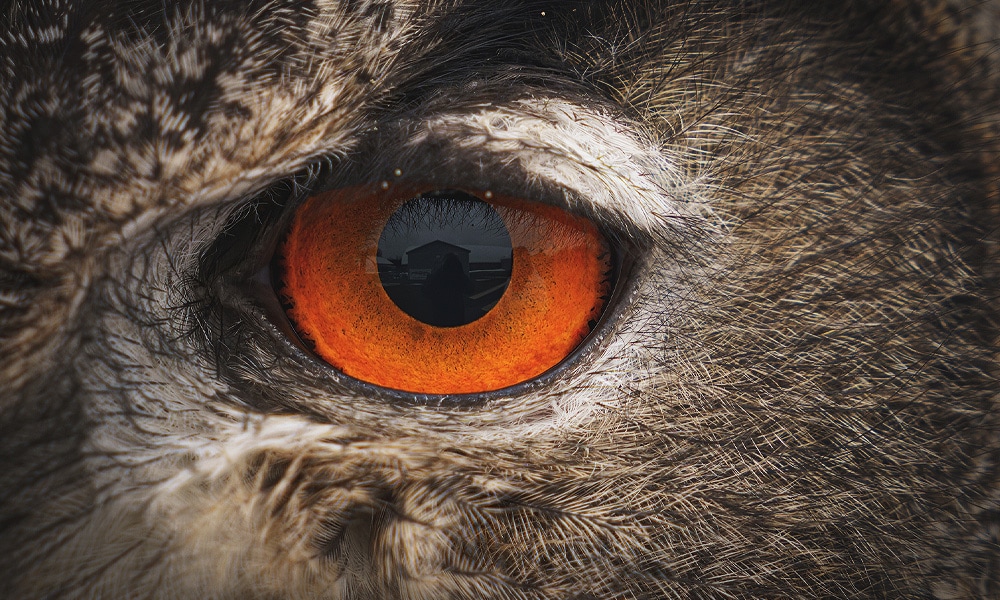
Many other species of birds have this membrane, including other raptors, as well as many ducks, dippers, and anhingas. This membrane is a thin layer of tissue that closes diagonally across the eye, from the inside to the outside. Without being able to blink, the owl’s eyes would easily become dry or injured by constant contact with dirt or dust.

specific question re owls meeting up:
it’s been a great many years but I distinctly remember chancing upon a pine forest with a clearing in its midst at dusk, on Sylt, Germany where dozens if not a hundred + owls were congegrated. It was mid summer. They looked down upon me. Nothing else. And I was a bit scared so beat a retreat. And at the time wasn’t a bird freak yet either. So couldn’t say what kind they were, except they were rather large.
Any thoughts? Similar experiences? Explanation?
Thank you!
Thank you for your knowledge of owls you have taught me so much about owls now i feel almost like an expert on owls.
Much like humans I tell you. Quite very interesting
Hello And Thank You for all the great info! I live in a area of tall trees a lake and many fields. Very early one morning I heard a mouse trap snap in the closet. I grabbed the reusable trap walked on to my porch to dispose of it ..no Barrel So I flung it out into the yard it skipped a couple times when it hit the ground .Just then a large Owl swooped out of the tree and grabbed it it stood over it with its wings spread it looked around then back into my tree with breakfast ……thats why I use traps not poison I would hate to have a poisoned rodent stumble out of my house get eaten ….and kill a Raptor ! I even hung a nesting box fingers crossed !
So I am a bit of a night owl. I just thought I would share and experience I had last night.
Early this morning, around 2 am, I went outside for a smoke. Once I got settled in my chair with my massive laayers on, I heard an owl hooting in the near distance.
Being able to do multiple bird calls, the owl being one of them, I started to hoot back. At first, mainly because it was so freaking cold, I wasn’t doing very well, and the owl kept moving away.
My intentions were to try and lure it in closer so I could get a glimpse of it. So I kept trying. It would move closer, then further away. As time went on I was getting better at the calls.
I was changing up my calls from it’s calls, trying different ways to entice it to come closer. Noting which calls caused it to move further away and which ones drew it closer.
After about 40 minutes of going back and forth, I noticed it was getting pretty close. Within a house or two away. And then something totally unexpected happened.
It literally flew right over my head. I wish it hadn’t been so cold, I would have had my camera on my phone ready. It was huge, close to a 5ft wing span.
There is a yard light that sits in the NE corner of the lot. I sit in a shadow of the sunroom that blocks that light. This allows me to have good night vision, and allowed me to see it fly overhead.
It was quite spectacular to say the least.
Great article! Last night I heard an Owl hoot in trees near my pond on my farm. So happy to know owls are here. Beautiful birds.
Last winter-spring I had a great Horned Owl couple living in the woods about 1 1/2 acres away. Might they return to the same place?
“After an owlet leaves the nest, it will often live nearby in the same tree, and its parents will still bring it food.”
Bwahaha. Just like humans!
Honestly, I’m making Christmas cards with owl stamps (Happy Owlidays) and wanted to know more about what eye colours the might have. Heaven forbid I’d choose the wrong colours for these super adorable stamps…
Well it turns out that I didn’t know as much about owls as I thought I did.
A very interesting read, and such beautiful pictures! Thank you!
This really helped with my speech!